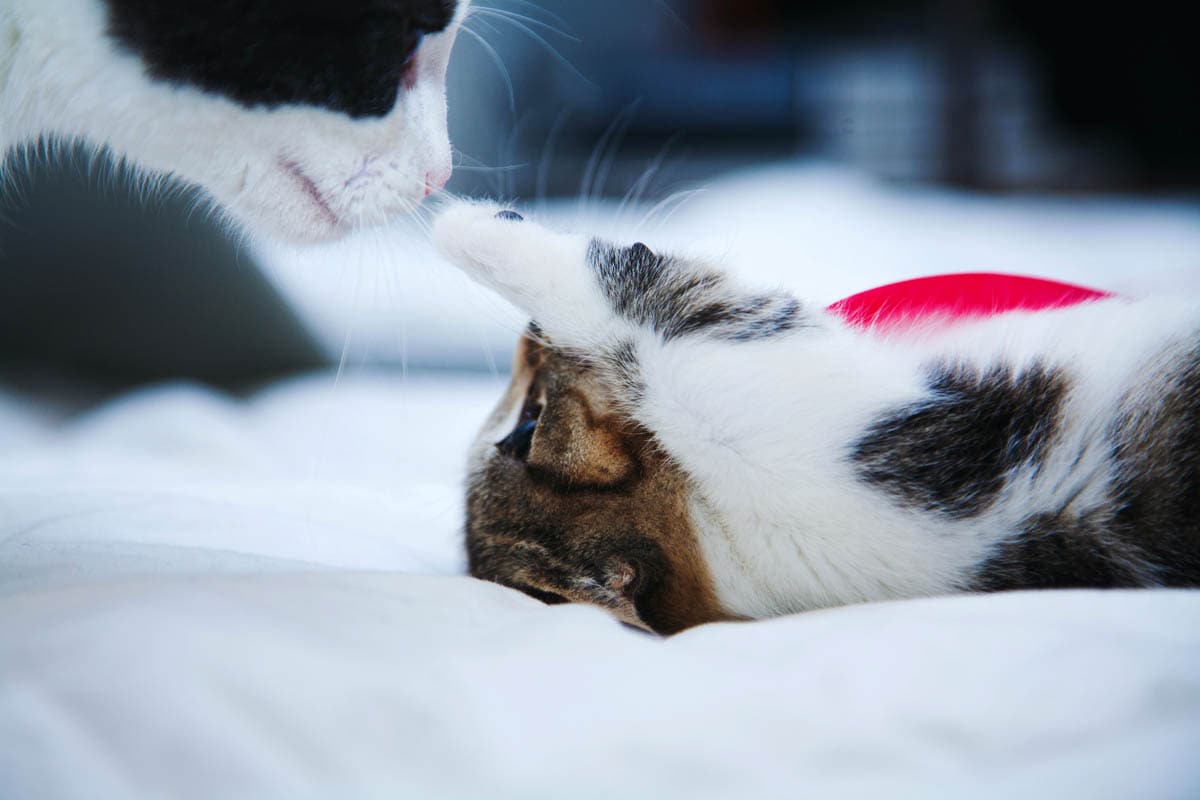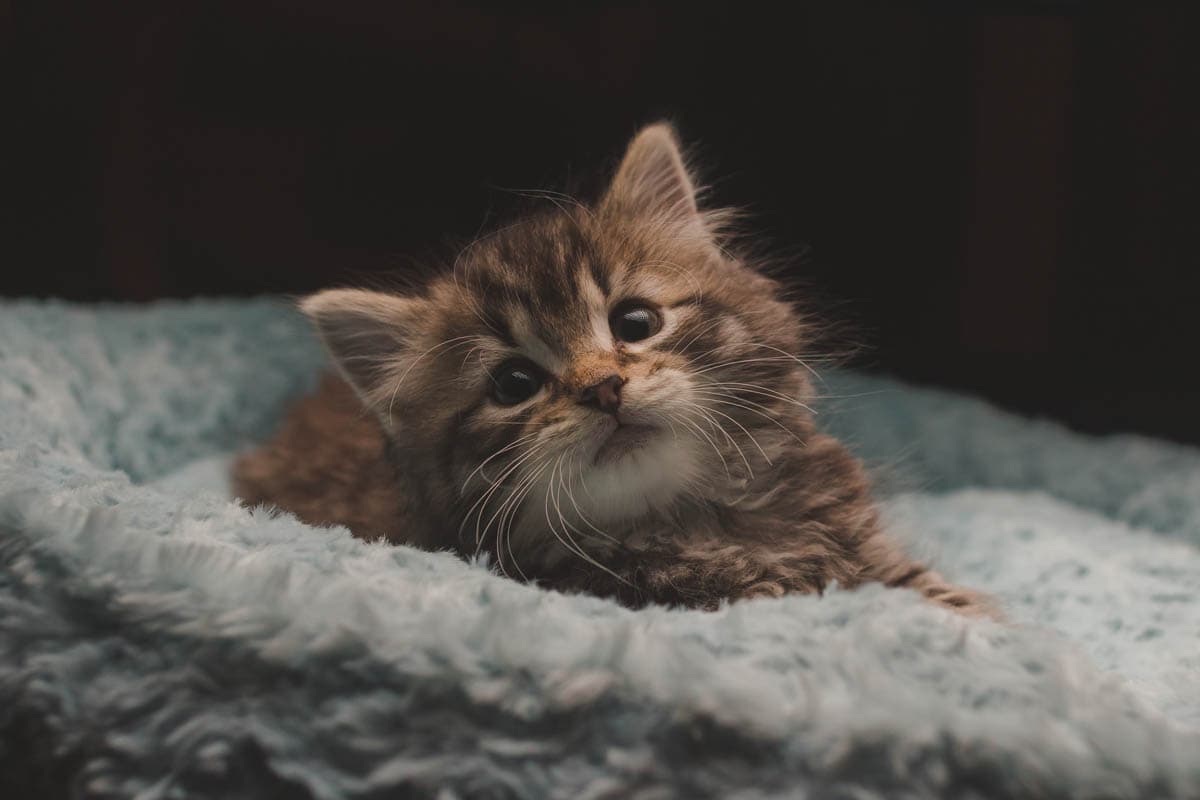The adult personality of a kitten is mostly determined in the first sixteen weeks of a kitten’s life. During this crucial time, proper socialisation, as well as experiences, will help to shape the personality of the cat as it moves into adulthood. What exactly is proper socialisation, and how do we make sure we are giving a kitten the best possible chance to develop into a happy and well-adjusted adult?
Socialisation is the act of socialising an animal so that it learns to interact with humans and other animals which it lives with, or will encounter.
This sensitive period (called the socialisation period) begins at two weeks of age where kittens show a willingness to explore and play; they are eager to learn and experience new animals, people and objects without fear.
A well-socialised kitten grows into a sociable cat, and they can have positive interactions with humans as well as other animals. Start from two weeks and make those interactions positive.
Staying with mum

First things first, the ideal age for a kitten to leave its mother is twelve weeks.
Kittens learn socialisation skills from their mother, siblings, as well as people. One of the biggest mistakes a pet owner can do is adopt a kitten who is too young. Kittens learn a great deal from their mother and littermates through play and other interactions. Have you noticed kittens at play? They stalk, jump, attack, bite and roll around with their littermates. This is a precursor for hunting behaviour as an adult and while most of our cats won’t have the opportunity or need to hunt, learning this behaviour is important. Why? Well, it teaches them physical coordination and how to read social cues. A kitten who is too rough with a littermate or its mother receives feedback with a hiss or a whack that it has gone too far, which teaches the kitten how to use an inhibited bite.
An inhibited (or soft) bite is a gentle bite, where the cat causes no harm to the person or animal it bites. My two dogs use an inhibited bite when they are playing together, and my Tonkinese cat uses an inhibited bite if we rub his belly.
A kitten who leaves its mother too soon can go on to develop attachments to suckling items such as a blanket or its tail while kittens start to wean onto solids from four weeks of age, but still nurses from their mother until eight weeks.
Hands-on
Get kittens used to gentle handling from early on. Stroke the kitten, pick it up, hold it, examine him and gently explore the belly, pay attention to the feet and claws, belly, ears and mouth.
If you plan to bring a kitten into your home, do your homework about its upbringing.
- Has the kitten been handled a lot by people or just one person? Has the kitten been around children?
I always recommend buying a kitten who has grown up around children if you have children at home.
The kitten needs to know that humans are a source of happiness, attention, and comfort. Don’t ever hit or yell at a kitten; it does nothing to change undesirable behaviour. It does, however, teach the animal to be fearful of people which can exacerbate the situation.
One final thought, remember that hands are for petting, not for hitting or playing. A soft kitten bite might be cute, but not a bite from an adult cat, so don’t teach them to play fight with your hands.
Habituation
Habituation is the process of accustomising a cat to environmental stimuli such as the vacuum cleaner, television, radio or washing machine so that it will not be fearful.
A kitten should be exposed to the hustle and bustle of a noisy household from a young age.
Cat carrier
The cat carrier can be a source of stress for any cat, especially if it only comes out when the cat needs to visit the veterinarian. It won’t take long before the cat associates the carrier with pain and discomfort. Instead, keep the carrier out at all times, as a place your cat can retreat to when it wants some time quiet time. Growing up as children, we were taught if the cats went into the carrier, we had to leave them alone. It was their sanctuary away from the hustle and bustle of a noisy household.
Veterinary visits
Not many of us like to visit the doctor, but we have the advantage that we know they are trying to help us.
We don’t want cats to associate every trip to the veterinarian as an unpleasant one; this stresses the cat out and can make the cat difficult to handle. Schedule walk-in visits where nothing happens other than the cat receives a treat or a cuddle.
Toilet training
Most kittens are taught proper toileting from their mother, but sometimes mistakes happen.
Confine the kitten to a small area in the first few days. There should be a bed, food and water bowls and the kitten’s litter tray.
Try to use the same litter the breeder or shelter has used initially. Buy a small litter tray so that the kitten can easily climb into and out of it, as the kitten grows, graduate to a larger tray.
If the kitten does have an accident, don’t over-react and don’t hit or rub the kitten’s nose in it. Clean up the mess and try again. Place him in the tray every time he wakes up and after he has had a meal.
Strangers
Introduce the kitten to unfamiliar people. During the life of the cat, there will be situations where the cat encounters a stranger, such as a veterinary nurse, pet groomer, boarding cattery owner or friends and family.

